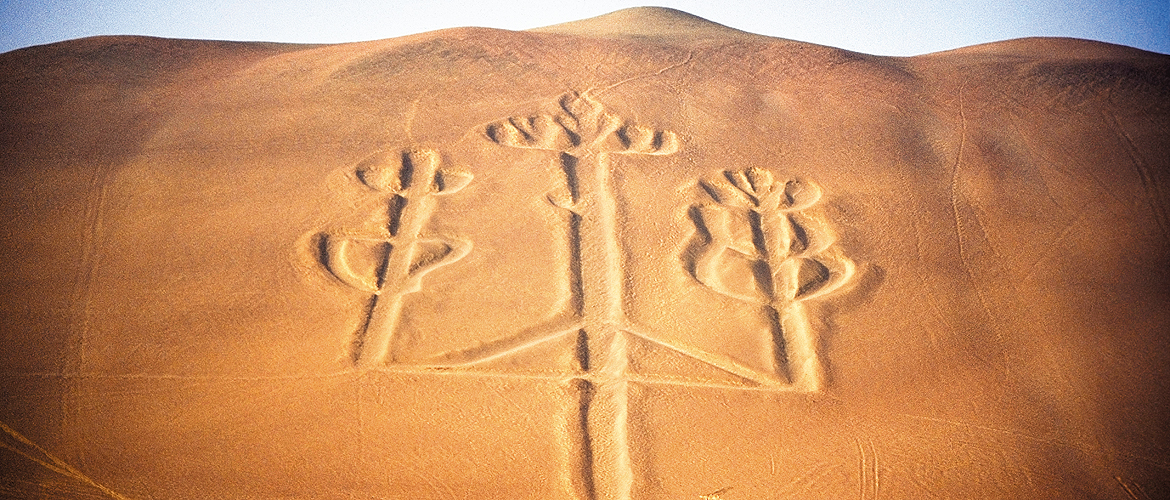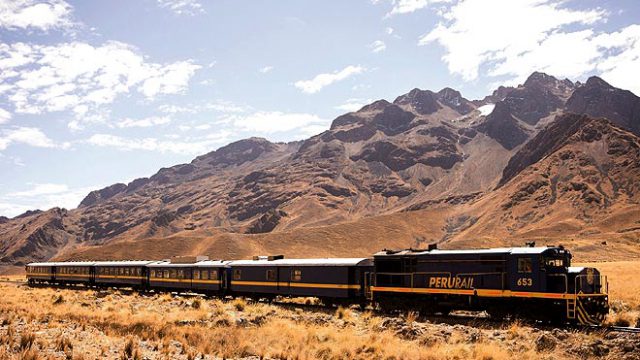Our van blazed down Peru’s historic Pan-American highway, the southern part of the world’s longest motorable road

We passed the sacred pre-Incan archaeological site of Pachacamac dedicated to Pacha Kamaq, the god of creation and earthquakes, though the pyramids were barely visible. Further on was Chilca, known for therapeutic mud spas, UFO sightings and E.T. ice creams! Paracas’ bright sunshine and peaceful coastline attracted the rich to build expensive summer homes and condos in the beach village of Asia.
Soon, we pulled into La Hacienda Bahia Paracas resort, an oasis of peace and luxury. With Spanish tiles in the courtyard and red bougainvillea vines on its walls, its rooms overlooked the glassy Paracas Bay. I would have savoured it longer but for the morning boat ride to the famous Ballestas Islands, pegged as the Galápagos of Peru. At the private jetty, Ronald the naturalist hollered, “Before Islas Ballestas, we stop at a geoglyph called El Candelabro of the Andes, because of its design. People don’t really know where, when or why it came into existence.”
Paracas Bay teems with rich marine life, birds and sea animals. Three of the six varieties of flamingoes are found in Peru while Paracas is home to the common flamingo. Four of the world’s seven sea turtles live here, besides otters and the endangered Humboldt penguin. “It’s one of the 17 varieties of penguins that live in Peru and Chile,” Ronald rattled on. The Paracas Natural Reserve is unique because it protects the ocean and the desert landscape. In 10 minutes we were face-to-face with what looked like a sand dune mountain with a gigantic cactus-like candlestand on it. This was the Paracas Candelabra.
The ancient Pre-Incan Paracas culture existed around 600BC-600AD. Excavations at the Paracas Cavernas and Necropolis, the 2,500-year-old mass burial clusters revealed mindboggling and morbid truths. Known for their exquisite pottery and tradition of mummifying the dead with delicate handwoven textiles using alpaca wool, the Paracas were among the earliest people of the world to experiment with trepanation, a form of brain surgery! Trepanation involved drilling holes into the brain and covering it with a gold plate or deforming and elongating the brain as a form of medical treatment besides religious rites and ceremonies. “They couldn’t give Pisco to knock out their patients,” Ronald quipped, “so they used hallucinogenic herbs, coca and a unique native Andean cactus to anaesthetise them. It is believed that the Candelabro design that faces the sky represents the San Pedro Cactus (named after Saint Peter who holds the keys to heaven) used in trepanation.”
Another theory is that 17th-century pirates, sailors and cartographers regarded the Candelabro as a navigational tool since it pointed south. Others believe they were created by aliens. But it is possible to create these designs, Ronald mused, “using scales, sticks and chords”. Documentaries like Ancient Aliens by Erich von Daniken spin fascinating theories about the possibility of ancient astronauts and extraterrestrial interventions. But Maria Reiche Newman, considered the Guardian of the Nazca Lines, researched the Candelabra for six months and proposed that it was a representation of the visible Southern Cross constellation.

Much older than the Nazca Lines, the Candelabro is closely linked to the Independence Age. When General José de San Martin landed here on 8 September, 1820 with 4,000 soldiers to liberate Peru from the Spanish Empire, the first headquarters of the Independence Army was in nearby Pisco. As he rested under a palm tree by Paracas Bay, he awoke from a dream to see flamingoes in the sky and decided to put its colours—red and white—on the Peruvian flag.
This prehistoric geoglyph on the dune’s north face has been so well preserved due to the peculiar climatic conditions of Paracas. The cold Humboldt Current that Peru shares with Chile ensures a lush marine life full of seaweed, plankton, fish and penguins. Because of the irregular water cycle, the water remains cold. There is no evaporation and no condensation, so no rain. Only half an hour’s drizzle in the entire year. The wind blows sand from the desert from south to north…from behind the figure, thus ensuring that sand passes over it! Paracas literally means “rain of sand” in Quechua.

Giving the guanay cormorants company were flocks of large-billed pelicans, red-legged cormorants, neotropic cormorants, rare oyestercatchers, Inca terns, besides nesting Peruvian boobies, another guano producer. Apparently they are called ‘booby’ because of their dummy gait! I spotted a rookery of Humboldt penguins camouflaged against the dappled landscape. They were shockingly small but waddled down like old heavy-bosomed matrons. Anticipating our exit, they dawdled before diving into the fish-filled waters for breakfast.
The wet rocks had other inhabitants too. Red crabs scuttled in crevasses while heaps of sea lions huddled and lolled in the sun, napping like beach bums. A few ‘energetic’ ones grunted, honked, yawned and moaned tiredly from the effort of hauling themselves from the water and lumbering over slippery rocks. There was even a beach for sea lions called the Maternity Beach where they breed between December and March. We spotted a small group of fishermen. Since fishing nets are banned in this protected area, they could only dive and pick their crabs, squids and octopus by hand or spear. One man waved a giant octopus at us… his prize catch of the day!
That lasting image of the big octopus dictated my choice for lunch at El Coral, the hotel’s restaurant—Pulpito Candelabro (grilled baby octopus). After trying the famous ceviche, I had my sirloin’s share of Loma Saltado Montado, along with another local favourite—the saccharine Inca Cola. The diversity in taste and fresh ingredients make Peruvian cuisine a big hit globally.

With a cheat sheet of 13 diagrams to compare with the original line drawings, I scanned the landscape. For the first 40 minutes, the incomprehensible vastness of the Pampas de Jumana desert between Nazca and Palpa stretched like an enormous snake moulting its scaly skin, interrupted by a few green patches of farmland. “We are now approaching Nazca Lines.” The lines of the whale went under the wing before I fathomed its design. I focussed harder for the next. My heart skipped a beat as I spotted the distinct lines of the 310ft hummingbird! Then the parrot, the mighty condor, the goggle-eyed astronaut or owlman, the 890ft monkey with its coiled tail that inspired the Peru logo, the spider, the tree and bizarre waving hands…


The Information
Getting There: Several international flights operate to Peru’s capital Lima via Paris, Amsterdam, London, Madrid and Miami. Jorge Chavez International airport, 12km west of Lima in the suburbs, lies in the port city of El Callao. Paracas is 261km south of Lima (a four-hour drive) and 22km south of Pisco along the storied Pan-American highway. Exclusive yachts also leave from Lima to Paracas.What To See & Do
Fly over Nazca . The airport at Pisco operates flight trips to the Nazca Lines. Aerodiana organises 20 flights on shifts per day. The Pisco-Nazca flight (1hr 30 min) covers 13 geoglyphs. Tickets $150
Boat trip to Ballestas Islands and Marine Reserve and the Candelabro of the Andes, a national treasure. There are regular boats excursions from Paracas Port.
Wine tours at Vina Tacama—a heritage Spanish hacienda with dances, parades and a great restaurant. tacama.com
Incas
International
La Hacienda Bahia Paracas



